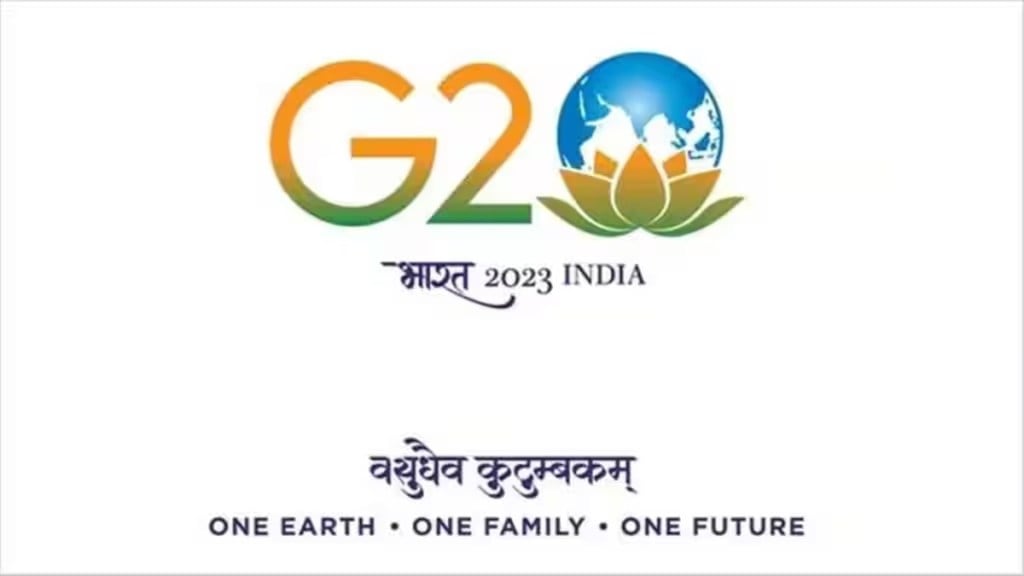Amidst growing discussions regarding the incorporation of the Sanskrit term “Vasudhaiva Kutumbakam” (The world is one family) in the G-20 logo, the Ministry of External Affairs has shed light on its usage and implications. The Ministry during its weekly briefing on Friday clarified that it employs only the English version of the phrase, “One Earth, One Family, One Future,” in summary documents and outcome statements.
This clarification followed reports suggesting that China had raised concerns about the use of non-UN languages, such as Sanskrit, within the G-20 texts under negotiation.
In response to these developments, Ministry spokesperson Arindam Bagchi underlined that English serves as the working language of the G-20. He pointed out that the theme of India’s G-20 Presidency, articulated in English as “One Earth, One Family, One Future,” encapsulates the essence of Vasudhaiva Kutumbakam. This principle, which embodies India’s civilizational ethos, has garnered substantial support and underscores numerous initiatives within India’s G-20 agenda. Notably, the G-20 letterhead during India’s Presidency showcases the term in both Devanagari script and English.
While certain media reports indicated that China had expressed reservations about the phrase, it appears that Russia, despite its consistent opposition to certain G-20 text language concerning Ukraine, has not aligned itself with China’s stance on this issue.
Diplomatic sources have shed light on the broader context of negotiations between Chinese and Indian delegates leading up to the G-20 summit in Delhi on September 9 and 10. A series of contentious issues, including the Sanskrit term, have led to strained discussions between the two countries. These tensions have manifested in debates over language related to initiatives such as the promotion of millets, the “Lifestyle for Environment” (LiFE) proposal by Prime Minister Narendra Modi, and even terms like “gender-led development.” Chinese negotiators have argued that such terms displace UN-agreed language for Sustainable Development Goals (SDGs).
Consequently, the summaries and outcome documents of the G-20 have been aligned with UN-approved language. For instance, “Lifestyle for Sustainable Development” and “gender-equality” have been used in place of “LiFE” and “gender-led development,” while the reference to millets has also been modified.
Reportedly, insiders familiar with the ongoing G-20 meetings leading up to the summit have indicated an apparent escalation in tensions between Chinese and Indian representatives, especially since India chaired the Shanghai Cooperation Organisation (SCO) Summit in early July. During this summit, India declined to endorse the “SCO Economic Development Strategy” document proposed by Tajikistan due to its explicit references to the Belt and Road Initiative (BRI) and the new Global Development Initiative (GDI), which India is not a part of.
As the G-20 summit approaches, Sherpas remain hopeful of resolving differences to facilitate a joint statement or Leader’s Declaration. There is speculation that a possible meeting between Chinese President Xi Jinping and Prime Minister Narendra Modi, during the upcoming BRICS Summit in South Africa on August 22-24, could pave the way for progress on G-20 text issues.
Will the Chinese President come for G20?
In response to queries regarding President Xi’s attendance at the G-20 summit in Delhi, Bagchi indicated that attendees’ participation could best be confirmed by them, expressing India’s anticipation of the event hosting all G-20 invitees.


